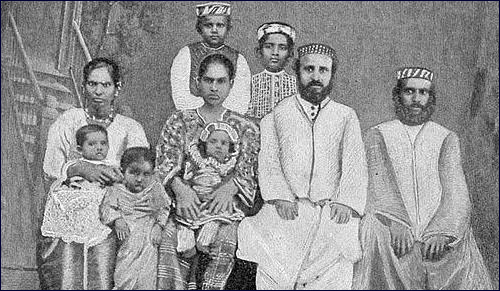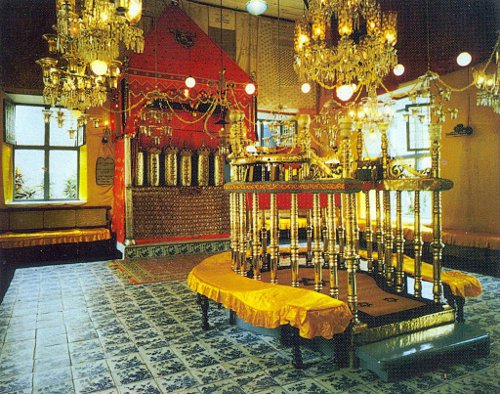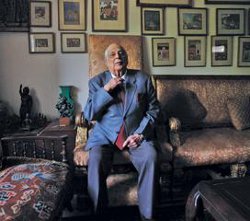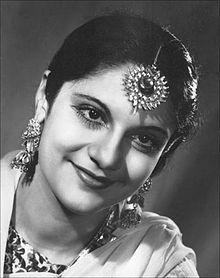 Iran’s Attack on Israel
Iran’s Attack on Israel

Jewish Geography

Jewish Geography
6 min read
Little-known facts about this ancient Jewish community.
India’s Jewish community is thousands of years old. Here are five little-known facts about the role Jews have played in India through the ages.
When Marco Polo traveled through India in the year 1293, he recorded a surprising encounter in his diaries about meeting Jews there who’d developed a thriving community on India’s southwestern coast. These early Jewish settlers were likely descended from Jewish traders who came from Yemen in the 700s and were welcomed by the local prince. To this day, the Jewish community keeps a set of thousand-year-old engraved copper plates record the welcome extended by the local prince to one Joseph Raban, a Jew who settled in the area.
When the Jewish community was threatened by attacks from South Arabian and Portuguese invaders in the 1400s, the maharajah in the nearby town of Cochin invited them to settle and even build their synagogue next to the town’s Hindu temple. A portion of Cochin soon became known as “Jew Town”, and the magnificent synagogue – with blue and white tiles from China on the floor and a crystal chandelier from Holland – serves the Jews of Cochin to this day.
As the area developed trade ties with the rest of the world, the Jewish community in Cochin reached out to their fellow Jews abroad, requesting Jewish books and connections. When a shipment of Torah scrolls, prayer books and other religious items Cochin’s Jews had ordered from Holland arrived in the town in 1686, Cochin’s Jews were so overjoyed they declared the day a local holiday.
 The Cochin Synagogue:
The Cochin Synagogue:
The largest Jewish community in India is also the most mysterious: the Bene Israel, who lived unknown to the rest of the Jewish world for generations in the Kolaba district of India south of Bombay. The Bene Israel maintain they are descended from a group of Jews – seven men and seven women – who were shipwrecked in the area thousands of years ago. Some believe they are descendants of the 10 Lost Tribes of Israel who fled northern Israel in 721 BCE after the Assyrian invasion; others maintain their ancestors fled King Antiochus (the king who oppressed Jews in Israel during the time of the Hanukkah miracle.)
The Bene Israel Jews adopted Hindu names and dress, but kept some of their traditions. Locals called them shaniwar teli, or “Saturday oil pressers” because they refused to work on Shabbat.
In the 1700s, Rabbi David Rahabi – a Jew from the thriving community of Cochin – visited the area and was astounded to find people who claimed to be Jewish – and who seemed to maintain some vestige of Jewish practice, such as saying the Shema prayer. Cochin Jews sent teachers, rabbis, cantors and ritual slaughterers to help them out, and in time the Bene Israel community began to embrace mainstream Jewish practice. Many of the members moved to Bombay and built numerous Bene Israel synagogues there, following the Sephardic liturgy.
Lieutenant General Jack Jacob, the highest-ranking Jew in India’s military, was born in Calcutta in 1923, part of that city’s large Jewish community which traced its roots to 18th Century Baghdad.
In 1971, Jacob was chief of staff of the Indian Eastern Command, and watched as a eastern Pakistan (today the nation of Bangladesh) tried to break away from mainline Pakistan. Pakistani forces responded ferociously, massacring between 500,000 and 3 million people and committing atrocities and war crimes. 10 million desperate refugees fled into India, which then declared war on Pakistan. Jacob led Indian troops into Pakistan to capture Dhaka.
 Lt. Gen Jacob
Lt. Gen Jacob
Within weeks, the local Pakistani General, A.A.K. Niazi, invited Jacob to discuss a cease-fire. Jacob flew to Pakistan, unarmed and with only one staff officer, and presented the Pakistani general with a choice of his own devising: surrender unconditionally and in public, and receive Indian army protection for his retreat – or continue fighting and face India’s full military might. (Jacob’s position was a bluff: facing 93,000 Pakistani troops, he commanded only 3,000 Indian troops, and they were 30 miles away.)
Jacob gave Gen. Niazi 30 minutes to decide and went outside to wait. “I appealed to God for help and said the Shema Yisrael,” Jacob later recalled. After half an hour, Niazi agreed; 93,000 Pakistani soldiers surrendered the next day. Many were saved by the quick end to the fighting, and the new nation of Bangladesh awarded Jacob a certificate of appreciation for his “unique role” in the nation’s founding.
Lt. Gen. Jacob went on to serve as Governor of the Indian states of Goa and Punjab. He visited Israel often, and became close friends with Israeli politicians Shimon Peres and Yitzhak Rabin. Jacob passed away on January 13, 2016.
Even though Jews are a tiny minority in India – 5,000 out of a population 1.3 billion – many of the greatest Indian movie stars – and several of India’s Beauty Pageant winners – have been Jewish.
Esther Abrahams was crowned the first Miss India in 1947, and later went on to become one of the earliest movie stars under the stage name Pramila. (Her daughter Naqi Jahan became Miss India in 1967, and her son, Haider Ali, is a well known actor in Indian films today.) Fleur Ezekiel was crowned Miss India in 1959, and Salome Aaron earned the title in 1972. (Ms. Aaron went on to become a choreographer in Bollywood – India’s robust film industry, centered around Bombay – and her sons Kunal and Aditya are successful Bollywood actors today.)
 Esther Abrahams
Esther Abrahams
As India developed its thriving film industry, Indian Jews were involved from the beginning. David Joseph Pendar wrote India’s first “talkie” picture in 1931, and Jewish women soon stepped into acting roles that were often shunned by Hindu and Muslim women. Famous “Bollywood” stars such as Sulochana (Ruby Myers), Pramila (Esther Abrahams) and Nadira (Florence Ezekiel Nadira) all came from India’s Jewish community, though few Indians realized these legendary actresses were Jews.
After the establishment of Israel, many of India’s Jews began to leave for new lives in the Jewish state. From a population of approximately 30,000 Indian Jews in 1948, only about 5,000 Jews remain in India today. Approximately 80,000 Jews of Indian origin keep their unique traditions alive in Israel.
The Israeli towns of Dimona and Ashdod have been dubbed “Little India” by some residents, and it’s common to hear words in Hindi and the Indian language of Marathi in some homes. Dimona’s central municipal library even has a special section of Indian-language books, with local residents donating ever more books following trips back to India.
